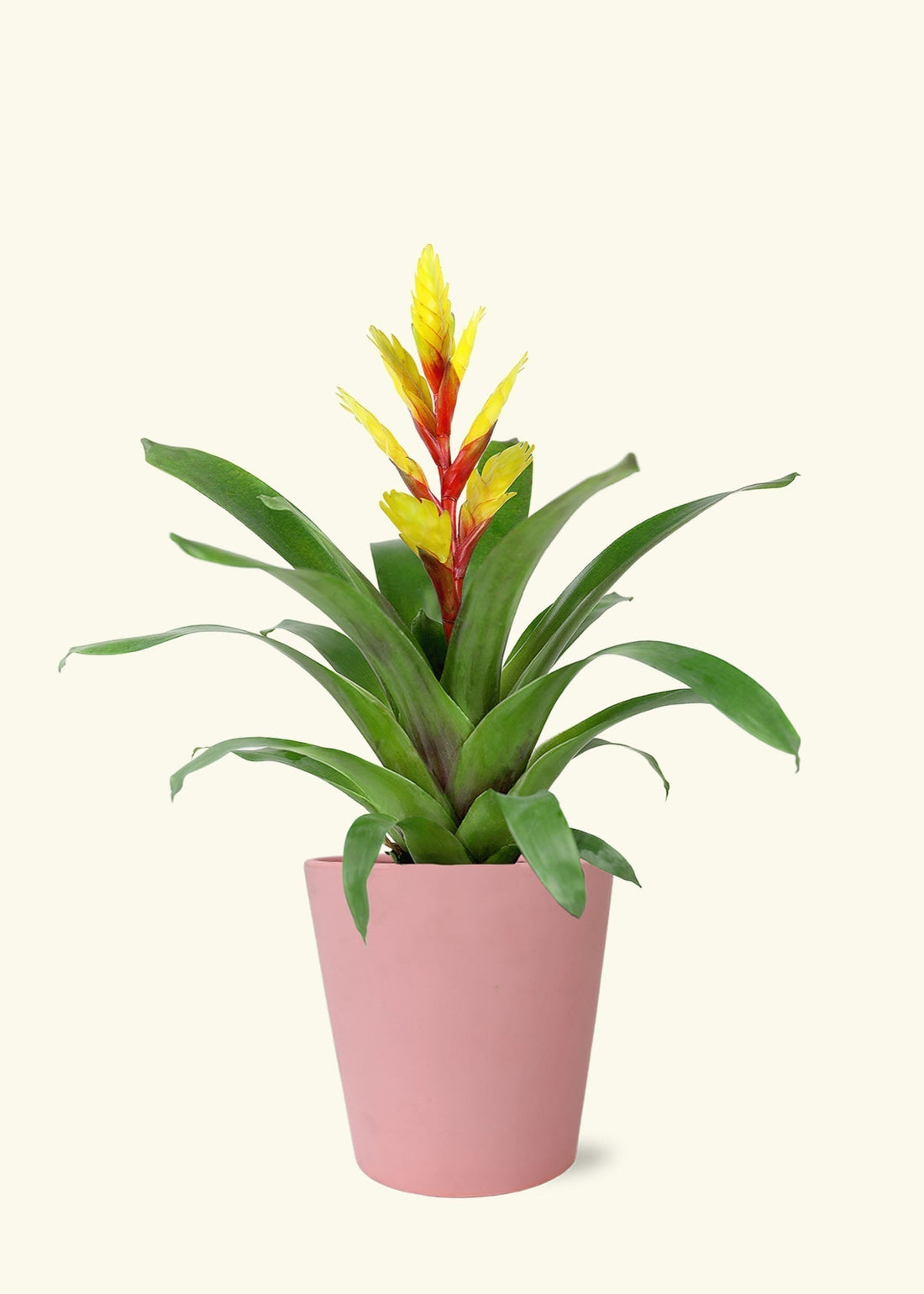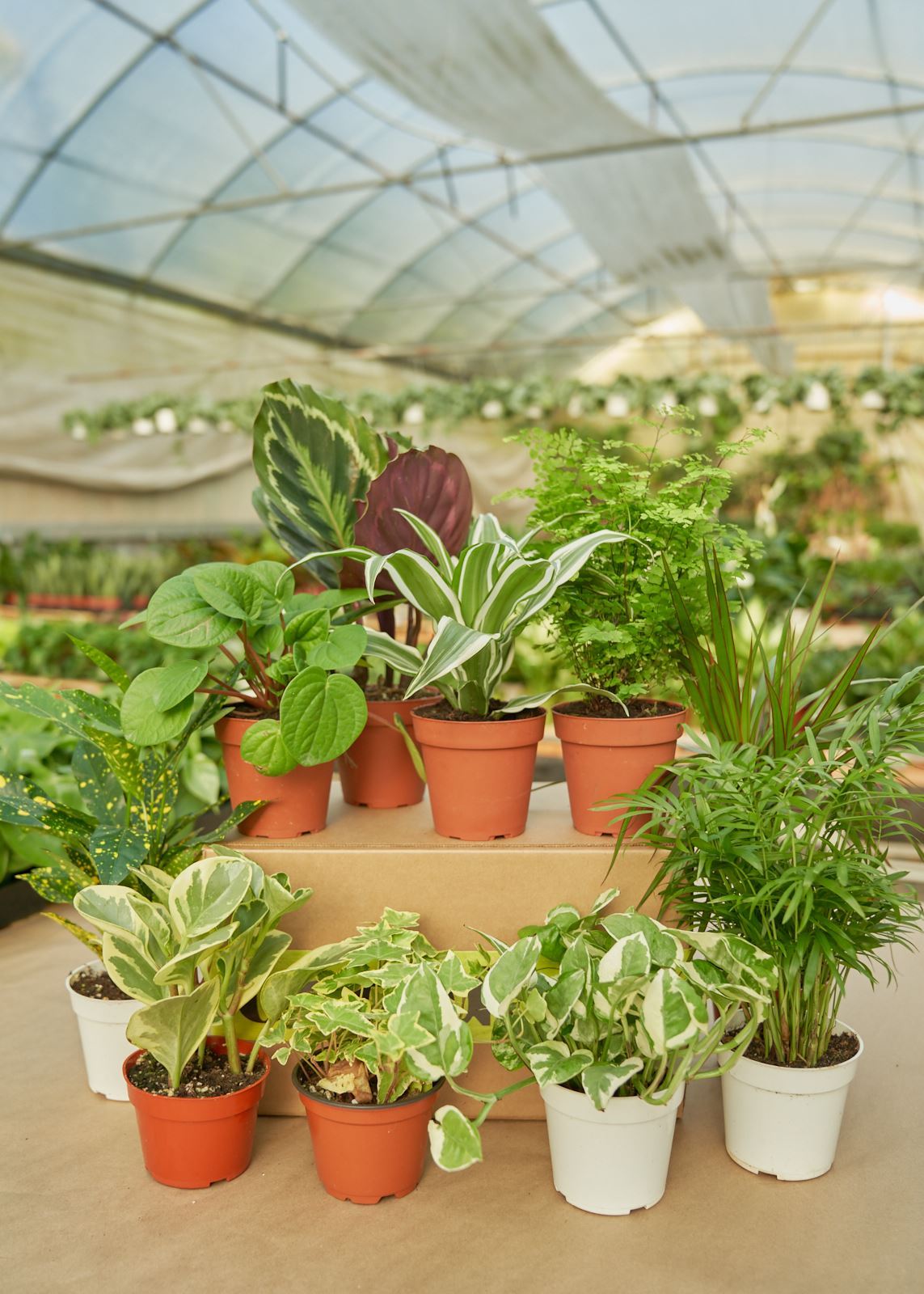Bromeliad Life Cycle: All You Need to Know (+ Care Tips)

Bromeliads are flowering plants without a well-developed root system, in the absence of which their central caps collect water and nutrients to support growth. Both beginners and seasoned gardeners love growing Bromeliad plants because they adapt well to varied conditions and require little care.
Bromeliads have a simple yet unique life cycle. These beautiful plants bloom once when they mature, only to fade away after flowering.
So, what happens to your Bromeliad when its colorful inflorescence dies?
Read on as we dive deeper into the Bromeliad life cycle! You’ll learn how these tropical wonders multiply and find helpful care tips to make your plant bloom and continue to thrive through its pups.
About Bromeliads

If you love plants that give your home and garden a splash of color and a touch of the tropics, you’ve got to check out Bromeliads (Bromeliaceae). These houseplants are epiphytes, belonging to the Bromeliaceae family, which consists of 3,700 species, including the popular Air Plants (Tillandsia). Bromelaid’s leaves grow uniquely in a circular shape, often forming a cup at the top to collect water. These plants originate from Central and South America and thrive best in warm places, mainly in USDA hardiness zones 10 to 12. Known for being low-maintenance, they can brighten a corner in a room with little effort.
Bromeliads are also safe around pets, one of their many advantages. The Pineapple Plant (Ananas comosus) is the most famous member of this family, loved for its spiky green foliage and a cute pineapple fruit that appears atop its stem. Another favorite is Guzmania Bromeliad (Guzmania spp.) with its bold, colorful blooms. With their charm, easy-care requirements, and fascinating shapes, it’s natural to wonder more about the Bromeliad life cycle, as we explore next.
Bromeliad Life Cycle: How Long Do Bromeliad Plants Live?

The Bromeliad life cycle is all about these epiphytes’ beautiful blooms and pups. If you are wondering about the Bromeliad bloom stages, remember that it may take up to 2-5 years for the plant to produce its striking flower. After blooming, the mother plant dies off over time, but not before its baby plants, called pups, appear first. Hence, on average, a Bromeliad lives from 2 to 5 years, depending on its specific life cycle and variety. Through the pups, the Bromeliad life cycle continues; thus, you can enjoy their beauty for years.
How Many Times Will a Bromeliad Bloom?
A Bromeliad plant blooms only once in its lifetime; however, its bright flowers can last for several weeks or months, depending on the care and attention you give it. The good news is that pups start to grow around the base of the mother plant, which will eventually become new plants that carry on the Bromeliad life cycle.
What Do You Do With a Bromeliad After It Blooms?
Once a Bromeliad's blooming stage has finished, you’ll notice that the flower starts to brown and the pups begin to appear. The next step is to trim the old flower stalk to keep the plant neat. You should continue caring for the mother plant until it naturally fades away.
Do You Cut Off Old Bromeliad Flowers?
You should cut off old Bromeliad flowers once they start turning brown or shrinking in size, which is a natural part of the Bromeliad life cycle. After blooming, the flower will not return, so gently remove it with clean, sterilized scissors. Trimming the spent bloom promptly helps channel the plant’s energy into the development of pups.
Bromeliad Pups: Removal, Propagation, and Repotting

Bromeliad propagation and repotting the new pups help promote new growth and continuation of the Bromeliad life cycle, making it a great way to expand your Bromeliad collection from a single plant.
Bromeliad Care After Flowering: Do You Have to Remove Bromeliad Pups?
You should continue to care for your Bromeliad after flowering, as this will promote new pup growth. Eventually, it’s best to remove the pups when they become strong and large enough. Keep them attached until they develop their own leaf rosette..
What Happens If You Don’t Remove Bromeliad Pups?
If you don’t remove Bromeliad pups, they’ll grow around the mother plant and share space in the same pot. This is not an ideal scenario because the pups need space to grow into mature plants. So, it’s good to remove these pups and plant them in separate pots. But, how do you remove pups from Bromeliads?
How to Separate Bromeliad Pups
This is how to separate Bromeliad pups from the mother plant:
- Wait until the pups are about one-third the size of the mother plant.
- Water the soil lightly a day before to ease removal.
- Use a clean, sharp knife or scissors to cut at the base while keeping a small clump of roots attached to each pup.
- Let the pups dry a little before attempting to transplant them.
Repotting Bromeliad Pups
Repotting Bromeliad pups is fairly simple. Follow our steps on how to replant Bromeliad pups:
- Wait until each pup is about one-third the mother’s size before separating it.
- Carefully remove the pups by cutting the base with a clean knife or scissors, keeping the roots intact.
- Allow the pups to dry for some time.
- Fill each pot with a light, well-draining soil mix.
- Place the pup gently into its own pot and firm the soil around the baby Bromeliad.
- Water lightly with chemical-free water.
- Place the pots in bright, indirect light; maintain the humidity around the plant.
Bromeliad Care: How Do I Get My Bromeliad to Bloom?

While mature potted Bromeliad plants are low-maintenance, you still have to pay attention to their light, water, and humidity needs to ensure vibrant growth and overall well-being.
How Long Does It Take for Bromeliad Pups to Bloom?
Bromeliad pups take about 3 years to reach maturity and bloom after you separate them from the mother plant. This also often depends on the care you provide and the particular variety. Proper lighting and warmth promote flowering, but you can also speed up blooming by placing a fruit near the plant and covering it with a plastic bag for about a week. The ethylene gas released by the fruit triggers early blooming.
Bromeliad Light Requirements: Do Bromeliads Prefer Sun or Shade?
Bromeliad plants prefer sun rather than shade. Ideally, they should be placed in a spot with bright, indirect sunlight. Bromeliads, such as Guzmania and Vriesea, can tolerate lower light levels, while varieties like Aechmea and Neoregelia need bright, indirect sun. Direct sunlight can cause sunburn.
How Often to Water Bromeliads
You can water Bromeliads every 1-2 weeks during the growing season (early spring and summer) and every 2-3 weeks in their dormant season (fall and winter). These tropical plants thrive in high humidity, making them perfect for keeping in the bathroom.
What's the Best Soil for Bromeliads?
Any well-draining soil that supports growth, retains water well, and allows for good air circulation is best for Bromeliads. A mixture of peat-based soil and sand in the ⅔ to ⅓ ratio is an ideal choice; you can also add orchid mix and charcoal.
Bromeliad Life Cycle: FAQs
Q: Can I propagate Bromeliads in water?
A: It’s best to propagate Bromeliad pups directly in soil. Placing the pups in water to develop further may cause the base and roots to rot.
Q: Why is my Bromeliad flower not blooming?
A: Bromeliads bloom only once in their life, and it also depends on their age, light, and care. If your plant is too young or not getting enough bright light, flowers may not appear.
Q: How to keep Bromeliad pups alive?
A: Bromeliad pups stay alive when separated at the right size, which is about one-third to one-half of the mother’s height. Besides bright light, moderate to high humidity, and light watering over the soil, not flooding the cup also helps keep the pups safe.
Q: How long do Bromeliads last in pots?
A: Bromeliads last for 2 to 5 years in pots. The mother plant dies after blooming, but the pups carry on the Bromeliad life cycle once repotted. This way, the beauty of these plants stays around for years.
Q: How do I know if my Bromeliad is dying?
A: Fading leaves, brown tips, and a center cup that stays empty are common signs that indicate your plant’s deteriorating health.
Q: How do I bring my Bromeliad back to life?
A: To bring your Bromeliad back to life, move it to a spot with bright, indirect light and add a little water to the center cup. Trim dry leaves and check the soil drains well, so there's no risk of rot.
Q: How do I get my Bromeliad to bloom again?
A: It’s worth noting that you can’t get your Bromeliad to bloom again. Once a pup grows into a mature plant, it can bloom with good light and care.
Conclusion
From the first bloom to the growth of new pups, each stage of the Bromeliad life cycle brings its own beauty. With the right Bromeliad care, sunlight, watering, and proper soil, these baby Bromeliad pups can thrive for several years.
So, repotting Bromeliad pups and providing them with attention after flowering will maintain the Bromeliad life cycle.
In the end, how long Bromeliads live depends on care; however, their charm and resilience tend to last much longer than a single Bromeliad bloom.
So, don’t hesitate to grow these gorgeous pet-friendly plants at home and enjoy their beauty. You can pair them with Tillandsia and other tropical greenery, like Peperomia, Alocasia, and lush Ferns.
